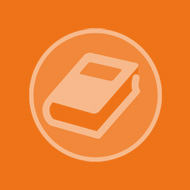New Zealand has one of the highest age-standardised incidence rates of melanoma in the world, occurring in approximately
35 to 40 people per 100,000 population, each year.1, 2 Despite being less common than other skin cancers,
e.g. basal cell and squamous cell carcinomas, four out of five skin cancer-related deaths in New Zealand are caused by
melanoma.1, 3 The mortality rate from melanoma has not substantially decreased over time, with around four
to five deaths per 100,000 population each year for the past 30 years.1 In 2016, there were 363 deaths from
melanoma.1
Although melanoma can occur in areas of the body not exposed to the sun, UV radiation is estimated to cause the majority
of melanomas by directly damaging melanocyte DNA in the skin.4 In New Zealand, the strength of UV radiation,
i.e. its UV Index (UVI) or capacity to cause sunburn, is approximately 40% higher than for similar latitudes in the northern
hemisphere.4 This difference is potentially due to factors such as the angle of the sun relative to the horizon,
lack of major atmospheric pollution, lower ozone levels, and the tilt of the earth.4 People with lighter
skin tones are more susceptible to developing skin cancers as their melanocytes produce less melanin, which functions
in part to protect the skin against the damaging effects of UV radiation. Rates of melanoma are over five times higher
in New Zealand Europeans compared with Māori and Pacific peoples.4
Melanoma broadly accounts for 10% of all national cancer registrations, however, the ratios of invasive:in situ notifications
vary substantially by District Health Board (DHB), suggesting potential differences in UV exposure, patient presentation,
physician identification, biopsy and/or reporting practices (pathologists vary in their interpretation of atypical melanocytic lesions).1, 4
All people in New Zealand should follow “sun smart” principles as UV radiation exposure is the only modifiable risk
factor for melanoma (also see: “Risk assessment helps target sun smart messaging and improves surveillance”).5 The
“slip, slop, slap and wrap” messaging aims to limit UV exposure through:5
- Avoidance of direct sunlight during times of peak UV radiation levels; particularly from 10 am to 4 pm between September and April
- Protection of exposed areas of skin using appropriate, densely-woven clothing, e.g. long-sleeved shirts, wide brimmed
or flapped hats, UV-protective sunglasses (ideally wrap around style)
- Application of broad-spectrum water-resistant sunscreen (at least SPF30* and preferably SPF50+); it is
recommended that sunscreen is applied 20 minutes before going outside, reapplied 10–20 minutes after going outside
(the “two coat” approach), and every two hours after that†
Unnecessary UV radiation exposure via artificial tanning device-use, e.g. sunbeds, should be avoided unless under medical
supervision for certain health conditions, e.g. psoriasis, as this increases the risk of melanoma.5
* SPF stands for “sun protection factor”, which is a measure of the amount of UV radiation required to cause sunburn
on sunscreen protected skin, relative to unprotected skin, i.e. SPF30 means that 1/30th of the UV radiation will reach
the skin. The greater the SPF value, the lower the probability of sunburn.
† See “Selecting and applying an appropriate sunscreen” for a discussion on the practical considerations relating to
sunscreen use in New Zealand.
Sun protection is most important for people at risk of UV over-exposure. While sun smart precautions are
important for everybody, they may need to be further emphasised with certain groups who have a greater risk of UV over-exposure,
such as people with occupations or hobbies that mean they spend a lot of time outdoors, those with fair skin or a tendency
to burn and younger people who may be less likely to adhere to sun smart behaviour and have a greater lifetime cumulative
risk of UV exposure events.4, 6
Adherence to sun smart practices in New Zealand is suboptimal. Evidence suggests that people in New Zealand
inconsistently apply sun smart principles. A recent study found that the observed use of protective clothing (4.3%) and
shade (10.7%) during periods of high UV exposure is low.*7 In addition, people often do not apply sufficient
quantities of sunscreen to achieve the advertised SPF.8 The internationally accepted standard for testing
sunscreen involves a thickness of 2 mg/cm2, while the average thickness of sunscreen used by consumers is
approximately 0.39–1.0 mg/m2.8 This may explain in part why the incidence and mortality rates
for melanoma on the New Zealand national cancer registry have not decreased since the inception of public health campaigning
over 25 years ago.1 These findings demonstrate a clear need to remind people about the importance of sun
smart behaviour.
* Based on 2,635 people observed between 10 am–4 pm at 16 outdoor recreational facilities in the Wellington region (on
Thursdays, Fridays, Saturdays and Sundays between September 2014 and April 2015). The average UVI was 6.2 (high risk of skin damage).
Selecting and applying an appropriate sunscreen
The minimum requirement for sunscreen is SPF30, which blocks more than 96% of UV radiation, but use of SPF50+ is preferable,
which blocks 98% or more of UV radiation.5 No sunscreen completely blocks UV radiation. Approximately one
teaspoon of sunscreen (for an averaged sized adult) should be applied to each of the following areas if exposed:5
- The face/ears/neck
- Each arm/hand, i.e. two teaspoons in total across both
- Each leg/foot, i.e. two teaspoons in total across both
- The front of the torso
- The back of the torso
Sunscreens are currently classified as cosmetics and therefore are not subject to the same rigorous requirements as
therapeutic products. Consequently, some sunscreens do not meet their claimed standard of SPF protection.9 Consumers
should therefore make informed decisions about the product they choose to purchase to ensure that it provides sufficient
UV protection (see link below). The New Zealand 2019–2029 Cancer Action Plan notes that in the long-term, consideration
will be given to including primary sunscreens (i.e. products designed solely as a sunscreen with a SPF of 4 or more) in
the proposed Therapeutic Products Bill.10
For a 2019 consumer report on sunscreens in New Zealand, see:
www.consumer.org.nz/articles/sunscreens/know-the-issue
Encourage people to monitor the UV index and be sun smart even on cloudy days
Many people only apply sunscreen in the summer if it is a “blue sky” day or it feels “hot”. However, sunburn is possible
year-round even with cloud cover.4 As such, anticipating exposure to high levels of UV radiation is important,
particularly for people with fair skin who have an increased susceptibility to sunburn and melanoma.
Sun smart behaviour is recommended when the UVI is three or above. UVI levels are estimated based on the
time of year and time of day, as well as the latitude, amount of ozone in the atmosphere, amount of cloud cover and reflection
from surfaces such as concrete. A UVI of three indicates there is a moderate risk of skin damage; UVI levels can reach
13 in some parts of New Zealand during December and January (extreme risk). Online services provide daily location-specific
UVI levels and corresponding advice, including:
Sun exposure is still important to support vitamin D synthesis
Sun exposure is the primary source of vitamin D for most people.4 As such, sun smart behaviour does not
mean avoiding the sun altogether, and there is no evidence that regular use of sunscreen increases the risk of vitamin D deficiency.
For an overview regarding vitamin D and sun exposure recommendations (2012), see:
www.health.govt.nz/system/files/documents/publications/vitamind-sun-exposure.pdf
There is currently no evidence to support a national screening programme for melanoma.11 As such, a more
targeted approach is recommended to identify people at high risk, further emphasise sun smart messaging and tailor surveillance
according to their probability of developing melanoma within a specific timeframe.6, 12
A number of risk factors have been identified that influence a person’s risk of developing melanoma (Table 1).4
Table 1. Risk factors for melanoma.2,4,13,14
| Risk factor |
Explanation |
|
Age |
The risk of melanoma increases with age, likely due to an increased probability of intermittent UV overexposure
events and immune suppressive effects of ageing. However, younger people are still considered a priority for prevention
advice due to sun-seeking behaviours and increased participation in outdoor activities. Approximately 19% of melanomas
arise in people aged < 50 years. |
|
Sex/gender |
Overall, males have a higher risk of melanoma than females, other than those aged ≤ 50 years. Males are more likely
to have lesions on their trunk, while females are more likely to have lesions on their legs. Differences are presumably
due to a combination of behavioural and biological factors. |
|
Personal or family history of melanoma |
A number of genetic mutations, e.g. CDKN2A, increase the risk of developing melanoma. People who have a first-degree
family member with a history of melanoma are twice as likely to develop melanoma than those without. A personal history
of melanoma increases the risk of new melanoma ten times, and a personal history of non-melanoma skin cancer doubles
the risk compared to those without a history of skin cancer. |
|
Eye/hair colour |
In general, people with blue/grey eyes or blonde/red hair have a higher risk of melanoma than people with brown
eyes and dark hair |
|
Skin colour/type
(before tanning) |
The risk of skin cancer is influenced by the amount of melanin produced by melanocytes,
more melanin results in greater protection against UV radiation. Therefore, people with darker skin types* have
a considerably lower risk of melanoma compared to those with “fair” skin or skin that burns easily.
The Fitzpatrick skin type system is one method of identifying people requiring increased
sun protection based on their level of melanin pigmentation. With this system, skin types I and II are considered to
have a high risk of sun damage:
- Type I – pale white skin, blue/green eyes, blonde/red hair – always burns, does not tan
- Type II – fair skin, blue eyes – burns easily, tans poorly
- Type III – darker white skin – tans after initial burn
- Type IV – light brown skin – burns minimally, tans easily
- Type V – brown skin – rarely burns, tans darkly easily
- Type VI – dark brown or black skin – never burns, always tans darkly
|
|
Immune suppression |
A weakened immune system can increase the risk of melanoma, e.g. due to HIV, leukaemia or immunosuppressant medicine
use, e.g. after organ transplantation |
|
Number of moles |
Approximately one-third of melanomas develop within pre-existing melanocytic naevi. Both genetic
factors and UV exposure influence the development of naevi. A high number of naevi (> 100) and large/atypical naevi
(> 5) increase the risk of melanoma. |
|
Type of moles |
Geographic location |
Some locations in New Zealand have higher reported rates of melanoma than others. The association of geographic
location and melanoma risk is complicated and may be due to factors such as ethnic distribution, early diagnosis, reporting
practices, atmospheric factors, outdoor occupation and sun-seeking behaviours. |
|
Ultraviolet radiation exposure
- History of sunburn
- Intermittent UV overexposure
- Outdoor employment/leisure
- Sunbed use
|
UV radiation from the sun (and tanning devices) is the primary cause of the uncontrolled melanocyte proliferation
seen in melanoma in white skin. New Zealand has relatively high levels of UV radiation compared to the same latitudes
in the Northern hemisphere. Given that multiple factors relating to UV exposure are modifiable, these represent a core
focus of prevention strategies. Consider recommending the use of smartphone apps, e.g. UVLens, which can forecast UV
index levels. Some apps, including UVLens, personalise index levels according to skin type, geographic location, time
of day and year and cloud cover. |
|
 Non-modifiable
Non-modifiable
 Partly or potentially modifiable
Partly or potentially modifiable
 Modifiable
Modifiable
* There are no systematic investigations linking ethnicity to skin type in New Zealand, and Māori and Pacific peoples, as with all ethnic groups,
have heterogeneity in skin type.4 However, at a population level there are obvious differences, with melanoma rates being over five times higher in those of European
descent compared with Māori and Pacific peoples. Additional genetic factors beyond melanin production likely also play a role in melanoma risk for different ethnicities.





